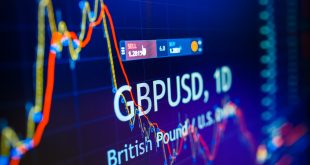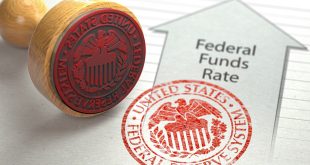Yield curve inverts in the US, signaling at least economic slowdown and hinting at the possibility of recession or a big decline in economic growth globally and in the domestic economy at most.
Monetary policy decisions by major central banks round the globe triggered some sort of panic and risk aversion, but the American dollar could not take advantage of the panic scenario, ending the trading day with losses against most major rival currencies.
The EUR/USD pair trades around 1.0570, while GBP/USD hovers around 1.2350. The AUD/USD pair surged to 0.7070, holding nearby, while the USD/CAD changes hands at 1.2920. Save-haven currencies were firmly up against the dollar, with USD/CHF down roughly 300 pips, now trading in the 0.9630 region. Ahead of the Bank of Japan monetary policy decision, the USD/JPY battles around 132.00.
Gold surged to a fresh 3-day high of $1,852.74 a troy ounce, holding nearby ahead of the Asian opening, while crude oil prices recovered some ground. WTI is now trading at $117.70 a barrel.
Economic Data
The Federal Reserve Bank of Philadelphia’s Manufacturing Business Outlook Survey’s diffusion index for current general activity declined to -3.3 in June from 2.5 in May. This print missed the market expectation of 5.5 by a wide margin.
New US home construction dropped in May, highlighting the impacts of ongoing supply chain challenges and sinking sales as mortgage rates rise. Residential starts declined 14.4% last month to a 1.55 million annualized rate, the lowest in more than a year, according to government data released Thursday. The median forecast called for a 1.69 million pace. April construction was revised sharply higher to a 1.81 million rate, which was the strongest since 2006.
Applications for US unemployment insurance were little changed last week, suggesting the labor market remains exceptionally tight.
Initial unemployment claims decreased by 3,000 to 229,000 in the week ended June 11, Labuor Department data showed Thursday. The median estimate in a Bloomberg survey of economists called for 217,000.
Other Developments
The Switzerland National Bank surprised markets with an unexpected 50 bps rate hike, while the Bank of England moved as planned and made its fifth consecutive 25 bps hike. Two things we learned from this. On the one hand, the Fed is far more aggressive than any other central bank. On the other, global policymakers are much more scared about the economic situation than what they let see.
US equities resumed their declines, with Wall Street plummeting to fresh 2022 lows. The DJIA and the S&P 500 traded at levels last seen in January 2021. The FTSE 100 also plummeted as the BOE’s decision fell short of the market’s expectations. Recession fears are behind stocks’ collapse.
Demand for government bonds sent yields to the lower end of their weekly range, which in turn undermined demand for the greenback. The yield on the 10-year Treasury note currently stands at around 3.30% after flirting with 3.50% earlier in the day. The dollar’s weakness may well be temporal if the demand for safety continues.
The Bank of Japan, on Friday, is likely to maintain ultra-low interest rates and stress its resolve to support a fragile economy with massive stimulus, a move that may further weaken the yen by highlighting a policy divergence with the rest of the world,” said Reuters ahead of Friday’s BOJ monetary policy announcement.

 Noor Trends News, Technical Analysis, Educational Tools and Recommendations
Noor Trends News, Technical Analysis, Educational Tools and Recommendations




